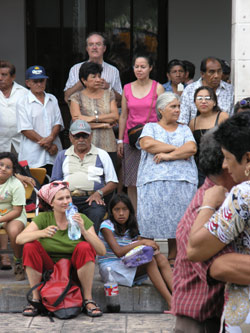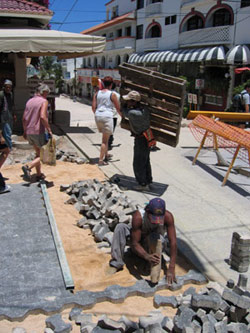|
Ethnographies are representations of cultural
communities, forms, and processes. Ethnographies, traditionally
speaking, are written texts, but they can also exist in other forms
of visual media and documentation – such as art, video, photography,
music, and performance. One of OSEA’ goals are to explore multiple
media as tools to both trigger or elicit information and experiences
as well as to document the pedagogical and investigative experiments;
in short, we sought to expand the modes of documenting the ethnographic
processes of fieldwork, but by acknowledging that our use of these tools
as triggers also made them a part of the subject of our study.
Thus, in the course of the ethnographic training program we are continually
documenting our activities in writing, video, and photography as well.
We periodically mount exhibits and ethnographic installations that stage
our research and pedagogical activities and products to stimulate a
broader engagement with the community. These ethnographic performances
installations, and exhibits, are in themselves fieldwork encounters
and ethnographies in an expanded sense of the term “ethnography.”
Tourism Street Scenes. Merida en Domingo on the left. Watching the street dancers performing traditional Yucatec Jarana. On the right, the city government of Playa del Carmen, on the Maya Riviera, tears up the main 5th Ave tourist street to put in better drainage system
 
|